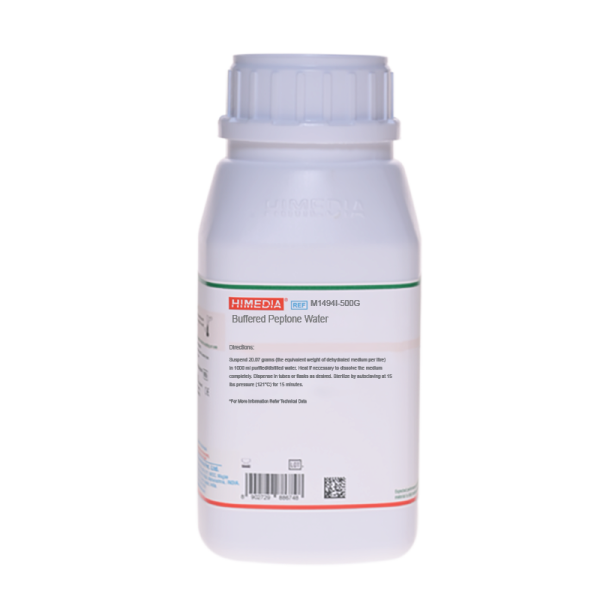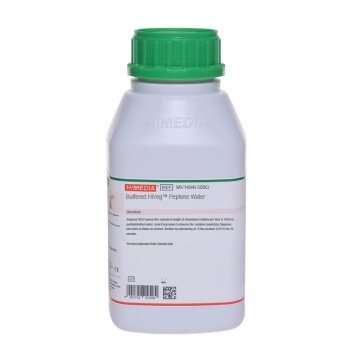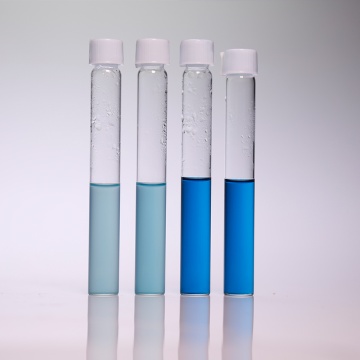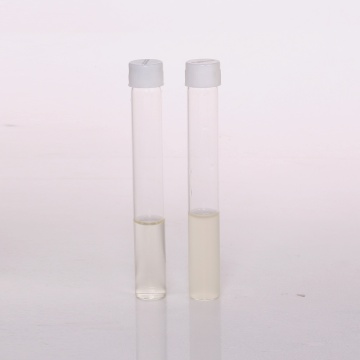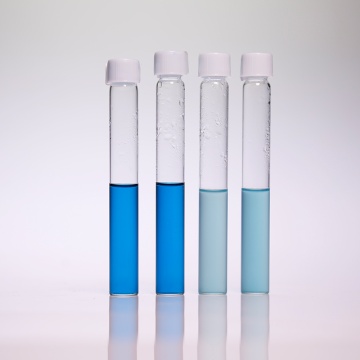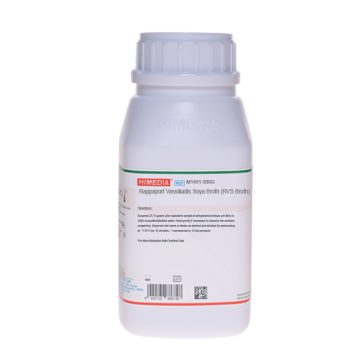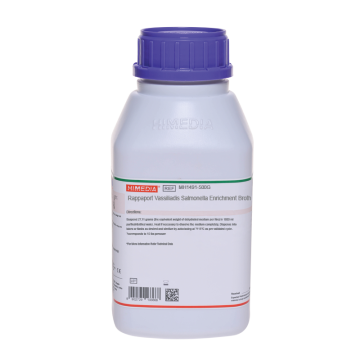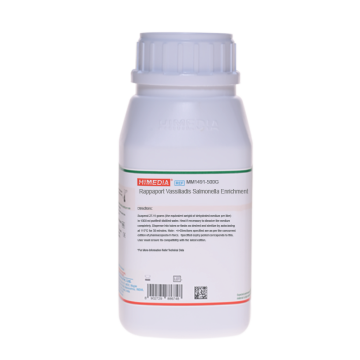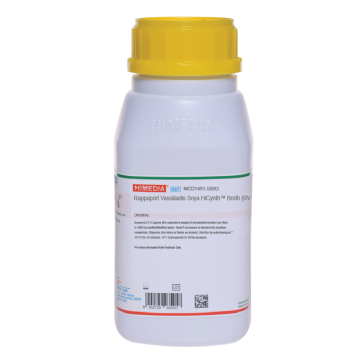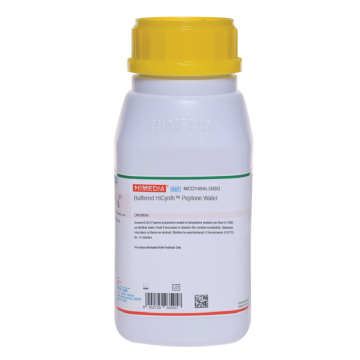 Your enquiry has been submitted
Your enquiry has been submitted
Buffered Peptone Water
Non selective media for Enrichment and Propagation#CC293D
Intended use
Recommended as a pre-enrichment medium of Enterobacteriaceae organisms such as Salmonella and Cronobacterium species from food and animal feeding stuffs, water, milk, milk products and other products. The composition and performance criteria of this medium are as per the specifications laid down in ISO 6579-1:2017, ISO 6887-1:2017, ISO 21528-1:2017, ISO 22964:2017, ISO19250:2010, ISO 11133:2014 & A1:2018.
Composition**
ISO 6579-1:2017, ISO 6887-1:2017 (E), ISO 21528-1:2017, ISO 22964:2017 Specification - Buffered peptone water (BPW)
| Ingredients | g / L |
|---|---|
| Enzymatic digest of casein (Peptone#) | 10.000 |
| Sodium chloride | 5.000 |
| Disodium hydrogen phosphate, dodecahydrate (Na2HPO4.12H2O) | 9.000 |
| Potassium dihydrogen phosphate (KH2PO4) | 1.500 |
Final pH (at 25°C): 7.0±0.2
**Formula adjusted, standardized to suit performance parameters # Equivalent to Enzymatic digest of casein
Directions
Suspend 20.07 grams (equivalent weight of dehydrated medium) in 1000 ml purified/ distilled water. Heat if necessary to dissolve the medium completely. Dispense as desired and sterilize by autoclaving at 15 lbs pressure (121°C) for 15 minutes.
Principle And Interpretation
Microorganisms that are subjected to environmental stresses may become structurally or metabolically damaged or injured. These microorganisms are unable to replicate in selective environments. Therefore these injured organisms must be resuscitated or permitted to repair the damage by incubation in an appropriate, non-selective environment. This medium is also recommended by APHA & FDA BAM for pre-enrichment of Salmonella, Cronobacter and Listeria (1,2). Edel and Kampelmacher (3) noted that sub-lethal injury to Salmonellae may occur in many food preservation processes. Pre-enrichment in Buffered Peptone Water (M1494I) at 35°C for 18-24 hours results in repair of injured cells (4). The buffering system prevents bacterial damage due to change in the pH of the medium. ISO committee has also recommended this pre-enrichment medium for the detection of Enterobacteriaceae (5), Salmonella (6,7) Cronobacter (8) and Listeria species (9) species from food stuffs, water and other materials. It is also recommended as a diluent for enumerations of all microorganisms (10).
Type of specimen
ISO 6579-1:2017/ ISO 6887-1:2017/ ISO 11290-1:2017/ ISO 21528-1:2017/ ISO 22964:2017
Food samples including milk and milk products, in animal feed, in animal faeces, water and in environmental samples from the primary production stage.
Specimen Collection and Handling
Processing : ISO 6887-1:2017 (10) / ISO 11290-1:2017 (9) Dilution samples : Preparation of test samples, initial suspension and decimal dilutions for microbiological examination.
Processing : ISO 6579-1:2017 (6) Pre-enrichment : Samples (25 grams in 225 ml) are preenriched in Buffered Peptone Water (M1494I) and incubated at 34°C to 38°C for 18 h ± 2 hours. Selective enrichment: 0.1 ml of pre- enriched sample is inoculated in 10 ml RVS Broth (M1448I) or MSRV Agar (M1428) and incubated at 41.5 ± 1°C for 24 ± 3 hours and 1 ml of culture is inoculated in MKTTn broth (M1496I) and incubated at 37 ± 1°C for 24 ± 3 hours. Isolation : The culture thus obtained is then plated on XLD Agar, Modified (M031I) and incubated at 37± 1°C for 24 ± 3 hours . Simultaneously plating on second isolation agar is carried out. Confirmation : Biochemical and serological tests are performed for confirmation.
Processing : ISO 21528-1:2017 (5) Pre-enrichment : Samples (10 grams in 90 ml) are preenriched in Buffered Peptone Water (M1494I) and incubated at 37 ± 1°C for 18 h ± 2 hours. Isolation : The culture thus obtained is then plated on Violet red bile glucose (VRBG) agar (M1684) and incubated at 37 ± 1 °C for 24±2hours. Confirmation : Biochemical and serological tests are performed for confirmation.
Processing : ISO 22964:2017 (8) Pre-enrichment : Samples (10 grams in 90 ml) are preenriched in Buffered Peptone Water (M1494I) and incubated at 34°C to 38°C for 18 h ± 2 hours. Selective enrichment: 0.1 ml of pre- enriched sample is inoculated in 10 ml Cronobacter Selective Broth (M1786I) and incubated at 41.5 ± 1°C for 24±2hours. Isolation : The culture thus obtained is then plated on HiCrome™ Cronobacter Isolation Agar(CCI Agar)(M2062I) and incubated at 41.5 ± 1°C for 24±2hours. Confirmation : Biochemical and serological tests are performed for confirmation.
Processing : ISO 19250:2010(E) (7) Non-selective pre-enrichment: Inoculate 50 ml of BPW (M1494I) at room temperature with the sample or dilutions thereof and incubate at (36 ± 2) °C for (18 ± 2) h Selective enrichment: Transfer 0.1 ml of the culture obtained enrichment broth to a tube containing 10 ml of the RVS Broth (M1448I) and incubated at 41.5 ± 1°C for 24 ± 3 hours and 1 ml of culture is inoculated in MKTTn broth (M1496I) and incubated at 36± 2°C for 24 ± 3 hours. Confirmation: : The culture thus obtained is then plated on XLD Agar, Modified (M031I) and incubated at 36± 2°C for 24 ± 3 hours . Simultaneously plating on second isolation agar is carried out. Confirmation : Biochemical and serological tests are performed for confirmation.
Warning and Precautions
Read the label before opening the container. Wear protective gloves/protective clothing/eye protection/face protection. Follow good microbiological lab practices while handling specimens and culture. Standard precautions as per established guidelines should be followed while handling specimens. Safety guidelines may be referred in individual safety data sheets.
Limitations
- Individual organisms differ in their growth requirement and may show variable growth patterns in the medium.
- Each lot of the medium has been tested for the organisms specified on the COA. It is recommended to users to validate the medium for any specific microorganism other than mentioned in the COA based on the user’s unique requirement.
Performance and Evaluation
Performance of the medium is expected when used as per the direction on the label within the expiry period when stored at recommended temperature.
Quality Control
Appearance: Cream to yellow homogeneous free flowing powder
Colour and Clarity of prepared medium: Light yellow coloured clear solution without any precipitate
Reaction: Reaction of 2.0% w/v aqueous solution at 25°C. pH : 7.0±0.2
pH: 6.80-7.20
Cultural Response
ISO 6887-1:2017 Dilution : Recovery of ± 30% of the original count (recovered on Tryptone Soya Agar, M290), when the inoculated sample holding time is 45 minutes to 1 hour at 20-25°C. The plates are incubated at 37°±2°C for 18 h ± 2 hours.
| Organism | Inoculum (CFU) | Recovery |
|---|---|---|
| Escherichia coli ATCC 8739 (00012*) | 50-100 | ±30% of the original count |
| Escherichia coli ATCC 25922 (00013*) | 50-100 | ±30% of the original count |
| Staphylococcus aureus ATCC 6538 (00032*) | 50-100 | ±30% of the original count |
| Staphylococcus aureus ATCC 25923 (00034*) | 50-100 | ±30% of the original count |
ISO 6887-1:2017 Dilution : Recovery of ± 30% of the original count (recovered on Tryptone Soya Agar, M290), when the inoculated sample holding time is 1 hour ± 5 minutes at 20 ± 2°C. The plates are incubated at 37°±2°C for 18 h ± 2 hours.
| Organism | Inoculum (CFU) | Recovery |
|---|---|---|
| Listeria monocytogenes ATCC 13932 (00021*) | 50-100 | ±30% of the original count |
| Listeria monocytogenes ATCC 35152 (00109*) | 50-100 | ±30% of the original count |
ISO 6579-1:2017 & ISO 21528-1:2017 Productivity Cultural characteristics observed after an incubation at 34°C to 38°C for 18 h ± 2 hours.
| Organism | Inoculum (CFU) | Growth |
|---|---|---|
| Salmonella Enteritidis ATCC 13076 (00030*) | 50-100 | good-luxuriant |
| Salmonella Typhimurium ATCC 14028 (00031*) | 50-100 | good-luxuriant |
| Escherichia coli ATCC 8739 (00012*) | 50-100 | good-luxuriant |
| Escherichia coli ATCC 25922 (00013*) | 50-100 | good-luxuriant |
ISO 22964:2017 Productivity Cultural characteristics observed after an incubation at 34°C to 38°C for 18 h ± 2 hours.
| Organism | Inoculum (CFU) | Growth |
|---|---|---|
| Cronobacter sakazakii ATCC 29544 (00214*) | 50-100 | good-luxuriant |
| Cronobacter muytjensii ATCC 51329 (00213*) | 50-100 | good-luxuriant |
ISO 19250:2010 (E) Productivity Cultural characteristics observed after an incubation at 36± 2°C for 24 ± 3 hours
| Organism | Inoculum (CFU) | Growth |
|---|---|---|
| Salmonella Typhimurium ATCC 14028 (00031*) | 50-100 | good-luxuriant |
Key :* Corresponding WDCM numbers
Storage and Shelf Life
Store between 10-30°C in a tightly closed container and the prepared medium at 20-30°C. Use before expiry date on the label. On opening, product should be properly stored dry, after tightly capping the bottle in order to prevent lump formation due to the hygroscopic nature of the product. Improper storage of the product may lead to lump formation. Store in dry ventilated area protected from extremes of temperature and sources of ignition. Seal the container tightly after use. Product performance is best if used within stated expiry period.
Disposal
User must ensure safe disposal by autoclaving and/or incineration of used or unusable preparations of this product. Follow established laboratory procedures in disposing of infectious materials and material that comes into contact with sample must be decontaminated and disposed of in accordance with current laboratory techniques (12,13).
Reference
- Salfinger Y., and Tortorello M.L. , 2015, Compendium of Methods for the Microbiological Examination of Foods, 5th Ed., American Public Health Association, Washington, D.C.
- BAM Media M192: Buffered Peptone Water (BPW), Bacteriological Analytical Manual, 2018.
- Edel W. and Kampelmacher E. H., 1973, Bull. Wld. Hlth. Org., 48: 167.
- Sadovski A. Y., 1977, J. Food Technol., 12.85.
- Microbiology of the food chain —Horizontal method for the detection and enumeration of Enterobacteriaceae —Part 1: Detection of Enterobacteriaceae. International Organization for Standardization (ISO), ISO 21528-1:2017.
- Microbiobiology of the food chain- Horizontal method for the detection, enumeration and serotyping of Salmonella - Part I Detection of Salmonella . International Organization for Standardization (ISO), ISO/DIS 6579-1:2017.
- Water quality — Detection of Salmonella spp. ISO 19250:2010
- Microbiology of the food chain- Horizontal method for the detection of Cronobacter spp. International Organization for Standardization. Draft ISO/ TS 22964, 2017 (E).
- Microbiology of the food chain — Horizontal method for the detection and enumeration of Listeria monocytogenes and of Listeria spp. - Part 2 , Detection method ; ISO 11290-2:2017.
- Microbiology of the food chain- Preparation of test samples, initial suspension and decimal dilutions for microbiological examination - Part 1 General rules for the preparation of the initial suspension and decimal dilutions. International Organization for Standardization (ISO), 6887-1:2017.
- Microbiology of food, animal feed and water — Preparation, production, storage and performance testing of culture media, ENISO 11133:2014 & A1:2018.
- Isenberg, H.D. Clinical Microbiology Procedures Handbook. 2nd Edition.
- Jorgensen,J.H., Pfaller , M.A., Carroll, K.C., Funke, G., Landry, M.L., Richter, S.S and Warnock., D.W.(2015) Manual of Clinical Microbiology, 11th Edition. Vol. 1.
| Product Name | Buffered Peptone Water |
|---|---|
| SKU | M1494I |
| Product Type | Regular |
| Physical Form | Powder |
| Origin | Animal |
| Packaging type | HDPE |
| References | 1. Edel W. and Kampelmacher E. H., 1973, Bull. Wld. Hlth. Org., 48: 167 |
| Customized Product Available | No |



